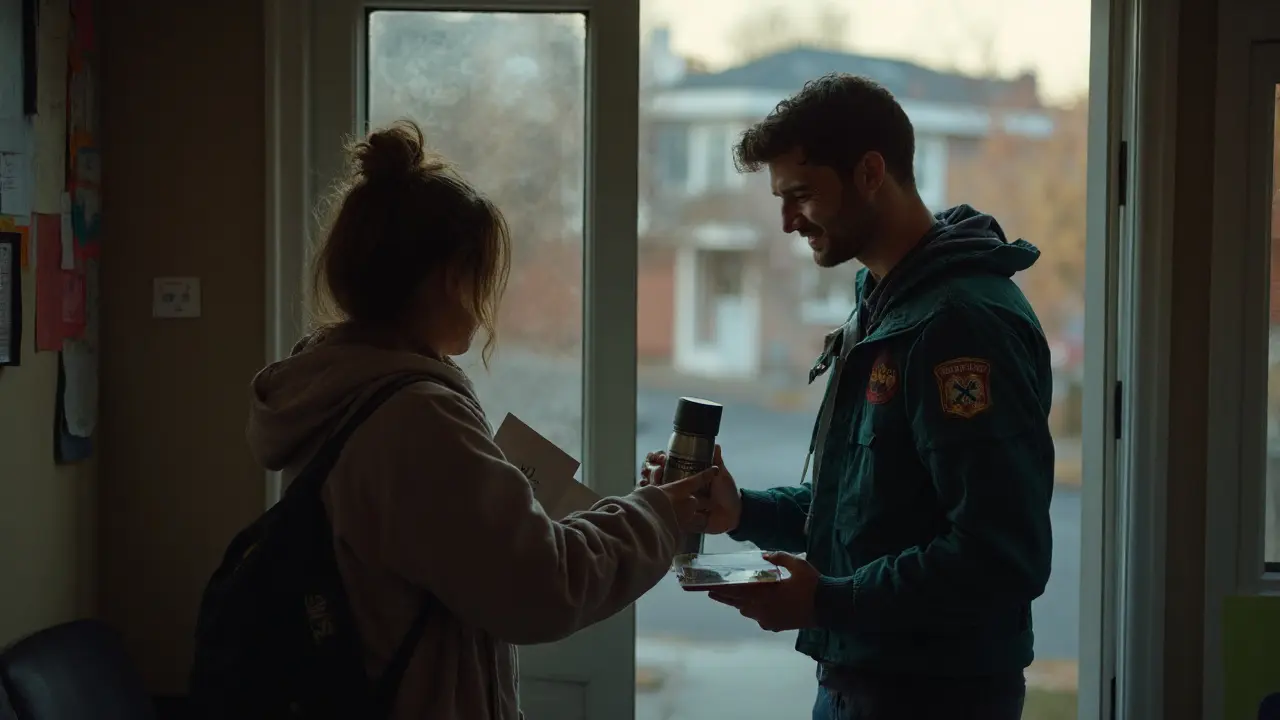The big turning point in a relationship rarely looks cinematic. If you're with someone who trains or works late-dancer, nurse, chef, coder-that moment will probably happen after midnight, under bright lights, with sore feet and an empty stomach. That’s not a mood killer. It’s a clarity booster. You see how both of you behave when energy is low and logistics get messy.
Researchers call these “turning points”-episodes that change the direction or confidence of a relationship. They’re less about grand speeches and more about small, repeated actions under pressure. In plain terms: how you both show up when it would be easy not to.
Quick reality check on ballet nights. Tech rehearsals and cue-to-cue runs can stretch past 11 p.m. Dancers burn serious energy and land with forces many times their body weight, so expect tape, blisters, protein snacks, and a foam roller in the corner. Pointe shoes often last 10-20 hours of use; before a premiere, that can mean more than one pair in a week. Nothing here is glamorous. It’s work. Your role is to respect the work.
What should you watch for? Three things: consistency, care, and cues. Consistency: do they keep promises to crew, cast, and you, even when tired? Care: how do they treat people who can’t give them anything back-stagehands, security, rideshare drivers? Cues: how do both of you handle “bids” for connection-little moments like a glance, a joke, or a quiet ask for water? Gottman’s lab found couples who reliably turn toward these bids are far more likely to stay together than those who ignore them.
Want to be useful at midnight? Bring quiet, high-protein snacks and water. Pack blister tape or bandages if they use them, plus a phone charger. Agree on a latest wrap time and a safe ride plan before the session starts. Don’t crowd their cooldown; ask if they want silence, stretches, or quick notes. Save heavy conversations for the next day when both of you have slept.
Odd hours can strain any couple. Research on shift work and mismatched chronotypes shows lower satisfaction when partners’ schedules never overlap. You can beat that by creating “anchor windows” you protect-two or three recurring blocks each week for meals, errands, or walks. Use a shared calendar and treat sleep like an appointment. Blackout curtains, a 20-30 minute wind-down, and caffeine cutoffs six hours before sleep go a long way.
Money and gear matter in this world. Pointe shoes run $80-120 a pair and can get chewed up fast during show weeks. Rehearsal days may require ride shares, extra snacks, and recovery tools. If you share expenses, set a simple plan: monthly caps, a small buffer, and one talk each month to adjust. Clarity reduces friction.
How do you know the moment is real? After a night like this, ask yourself four quick questions: Did we handle stress without taking it out on each other? Did we respect each other’s goals and time? Did we turn toward bids, even small ones? Do I want more nights like this because of who we are together, not the setting? If you’re hitting yes on those, you’re not daydreaming-you’re seeing compatibility under real conditions.
What the moment really is
That “this is it” feeling isn’t magic. It’s a pattern you notice under pressure. In relationships, the real moment is when stress strips off the nice talk and you see values, habits, and care line up-consistently. Not a perfect night. A revealing one.
Communication scholars call these turning points. Baxter and Bullis documented how small events-support during a crisis, meeting family, a hard talk-change the course of a bond by shifting confidence. It’s less about a grand gesture and more about behavior that repeats when it’s inconvenient. Midnight in a rehearsal studio is a high-signal setting because time is tight, bodies are tired, and choices have costs.
What predicts staying power? John Gottman’s lab found couples who stayed together turned toward each other’s “bids” for connection about 86% of the time; couples who divorced did so about 33% of the time. They also kept roughly a 5:1 ratio of positive to negative interactions during conflict. In a late-night setting, bids get small-eye contact, a squeeze, a “water?”-but they matter more because everyone’s operating on low fuel.
Here’s the catch: your body can trick you. Under stress, people “flood”-heart rate spikes, thinking narrows, and you default to fight, flight, or freeze. Gottman flags 100+ bpm as a common threshold for flooding in men, and it takes about 20 minutes of real calm to reset. There’s also classic misattribution of arousal: in Dutton and Aron’s 1974 “shaky bridge” study, participants misread adrenaline as attraction. Add sleep debt, and judgment gets worse. After about 17 hours awake, cognitive performance looks like a blood alcohol of ~0.05%; after ~24 hours, ~0.10% (Williamson & Feyer, 2000). Translation: don’t make big life calls at 12:45 a.m. because your heart is racing and the music’s still in your head.
So, what is the moment really? Data-collected in the wild. Treat it like a field test of your dynamic. Capture it now, decide after rest. A simple way to log it right after the night ends:
- Facts first: What actually happened? “She finished at 12:10, checked on a crew member, stretched 10 minutes, and asked for a ride.”
- Behavior under load: How did each of you handle delays, pain, or requests?
- Bids and responses: Who reached out (even subtly), and did the other person turn toward, away, or against?
- Repair attempts: Did someone say “My bad,” crack a small joke, or take a breath to reset?
- Aftercare: Food, water, ride plan, sleep-were basics respected without drama?
Patterns beat one-offs. One smooth night proves very little. Three similar nights-spread out over weeks, with different stressors-start to mean something. You’re looking for stable signals: punctuality that holds, kindness that doesn’t wobble, honesty that doesn’t shrink when stakes rise.
A ballet context adds specific stressors. Professional dancers often clock 6-8 hours of class, rehearsal, and conditioning on heavy days. Landing forces in jumps are several times body weight, so fatigue management matters. Pointe shoes typically cost $80-120 a pair and may last 10-20 hours of use, which makes preparation and recovery non-negotiable. On tech or dress nights, cues can run late and schedules change last minute. All of this compresses attention and patience. Your read of the moment should factor in that reality: you’re not evaluating romance in a vacuum; you’re evaluating teamwork around hard physical work.
How do you recognize the moment is the real thing and not adrenaline or wishful thinking? Look for these concrete markers:
- Promises kept when tired: If they said “cool down, then I’ll text,” did that happen? Do you do what you said you would too?
- Respect for boundaries: Warmth without hijacking the room; support without coaching unasked. No sulking if they need 10 minutes to debrief with the stage manager.
- Clean conflict: No name-calling, no eye-rolls, no scorekeeping. If tension pops, someone makes a repair move and the other accepts it.
- Turning toward bids: Thumbs-up, a quick smile, a “you good?” gets a response most of the time. Misses happen; the ratio matters.
- Safety and basics handled: Hydration, food, and transport are planned, not argued over at 1 a.m.
Now guard against the common traps:
- Adrenaline glow: Feeling amped after a show is normal. Write notes, sleep, and check if you feel the same 24-48 hours later.
- Confirmation bias: If you walked in wanting a fairy tale, you’ll cherry-pick evidence. Force yourself to list two tough moments you saw and how each person handled them.
- Sliding instead of deciding: Scott Stanley’s work shows couples who “slide” into big steps (moving in, sharing money) without a clear decision often report lower satisfaction. Don’t let a great midnight vibe drag you into permanent choices you haven’t discussed.
Use a quick decision hygiene routine the next day:
- Physiology first: Eat, hydrate, and get one normal night of sleep.
- Replay the tape: Write three behaviors you admired and one thing that needs work from both sides.
- Check ratios: Did positives outnumber negatives by about 5:1 during friction?
- Verify with another rep: Plan the next late session, keep variables similar, and see if the pattern repeats.
The “moment” is simply when the evidence lines up: the way you two handle time, stress, asks, and recovery looks like the life you both want. It’s not the confetti. It’s the calm. When you can describe what happened in plain terms, see the same signals more than once, and still want the next rep, you’re not chasing a scene-you’re recognizing a fit.
Midnight reality check
Here’s what late-night looks like when dance is a job, not a movie montage. Tech runs often start after normal classes, roll through spacing and lighting cues, and end close to midnight. In theater, a common format is a “10‑out‑of‑12” tech day: 10 working hours inside a 12‑hour window. Cue‑to‑cue means long pauses while designers write light and sound cues. You’ll see spike tape on the floor, rosin boxes for grip, and a vinyl “Marley” surface that’s kinder to joints than bare wood.
The physical load is real. Landings from jumps produce forces several times body weight, which is why ankles, feet, and shins take so much attention. Heart rates during rehearsals often sit in moderate‑to‑vigorous zones, and fatigue stacks across days. Pointe shoes aren’t durable: pros can burn through a pair in a single show, and many go through multiple pairs in a heavy week. Price per pair usually sits around $90-130. None of this is glamorous; it’s the cost of precision and safety.
Your job at midnight? Make the environment smoother, not busier. Bring quiet snacks, water, and tape. Respect the floor (no street shoes on Marley). Keep the phone on silent near the wings. If you’re asked to film a run on a phone, shoot landscape, keep framing wide, and stay still so coaches can see feet and lines.
- Hydration: plan about 0.4-0.8 liters per hour depending on sweat and heat (ACSM guideline). Add electrolytes if sessions run past 60-90 minutes or sweat is heavy.
- Fuel: aim for 20-30 g protein plus 40-60 g carbs within 30-60 minutes after the last run. If you want a number, 1.0-1.2 g carbohydrate per kg body weight in the first hour helps replenish glycogen.
- Snack ideas that travel: Greek yogurt + honey, chocolate milk, tuna packets + crackers, protein bar + banana. Skip high‑fiber or greasy foods right after; they can upset a tired stomach.
- Foot care kit: blister pads (hydrocolloid), paper tape, alcohol wipes, toe spacers, nail clippers, small scissors.
Budget and gear reality: plan for recurring costs and know what actually lasts. A small kit in your bag saves midnight scrambles.
| Item | Typical cost (USD) | Typical lifespan | Notes |
|---|---|---|---|
| Pointe shoes | $90-130 | Pros: 1-3 performances; Students: up to ~20 hrs | May need breaking‑in; glue can extend life slightly |
| Toe pads | $10-25 | 3-6 months | Replace when compressed or torn |
| Athletic/kinesiology tape | $5-15/roll | 1-3 weeks | Toes, ankles, blisters |
| Rosin | $10-20 | Months | Improves floor grip on Marley |
| Resistance band (TheraBand) | $8-20 | 6-12 months | Foot and ankle strength |
| Foam roller / ball | $10-40 | Years | Recovery and warm‑down |
| Pointe shoe glue | $10-15 | n/a | Hardens box/shank, adds a few extra hours |
| Protein snack/shake | $2-4/serving | Single use | Target 20-30 g protein post‑rehearsal |
Lighting and sleep are the hidden enemies. Bright stage light at night delays melatonin and makes it harder to fall asleep later. Caffeine’s half‑life is about 5-6 hours, so a 6 p.m. espresso can still be in your system near midnight. Handy fixes: switch the phone to warm color mode after 9 p.m., wear sunglasses when leaving the theater, keep the bedroom cool and dark, and protect a 20-30 minute wind‑down (shower, light stretch, low‑light reading).
Communication on tech nights is simple: short and clear. Ask, “Do you want feedback or quiet?” before giving notes. Confirm the end‑time and meeting spot before the call starts. If they’re in the zone, step back and keep watch on water, snacks, and ride timing. Turning toward small bids-like a quick glance or a hand squeeze-matters more than long speeches when everyone’s tired.
- Agree on the plan before the session: arrival, wrap window, and ride home.
- Pack a tiny kit: tape, blister pads, charger, electrolytes, light snack, cash card.
- During breaks: offer water first, then ask what’s needed. Keep chats short.
- After final run: help with cooldown (ask first), then start the exit routine.
- On the way home: light snack, low light, no heavy decisions. Sleep wins.
This is the grind behind ballet-long hours, detailed cues, lots of waiting, and careful recovery. If you can keep things calm, safe, and predictable at midnight, you’re adding real value when it counts.

Spot the real signals
Midnight rehearsals make small behaviors loud. If you want a true read on your relationships, watch what happens in the tiny moments-eye contact, tone, quick check-ins-when both of you are tired and hungry. These are the signals that predict staying power, not the Instagram stuff.
Start with bids for connection. A bid is any small reach: a glance, a squeeze, a joke, “Can you hold my bag?” The Gottman lab found that couples who stay together turn toward bids about 86% of the time; those who split turned toward only about 33%. After a long tech, count how many bids you both noticed and met. If you’re missing most of them, you’ll feel cold even if you’re physically together.
Next, look for repair attempts. Repairs are the small moves that stop a fight from spiraling: “My bad, I snapped,” “Can we start over?” or even a shared code word. Healthy pairs accept repairs fast and lower the heat before it boils. If one of you keeps doubling down or rolling eyes when the other reaches out, that’s a red flag under stage lights or anywhere.
Active-constructive responding is another strong signal. When your partner shares a win-“the double pirouette finally landed”-do you light up and ask for details, or do you flatten it with “cool” and a scroll? In lab studies (Gable, Reis, Impett & Asher, 2004), active-constructive responses predicted higher relationship satisfaction and commitment. On show weeks, micro-celebrations matter: 30 seconds of true interest beats five minutes of distracted nods.
Respect for time and boundaries shows up fast at midnight. Good sign: you help protect call times, cooldowns, and sleep windows. You ask, “Do you want notes, silence, or snack help?” before jumping in. Bad sign: guilt-tripping rehearsals, surprise drop-ins backstage, or pushing heavy talks when they need to ice and breathe.
Stress handling is the unglamorous honesty test. When voices rise or shoulders tense, can you both pause and calm down? Physiological arousal drops meaningfully after about 20 minutes of quiet, which is why planned breaks work. Agree on a reset routine-water, short walk, no phones-then return with inside voices. If fights keep running to the final curtain, that’s data.
Reliability beats romance in the long run. Do the basics happen without drama-ride plan confirmed, charger packed, quick “home safe” text? If logistics always turn into a fire drill, you’ll burn out on avoidable friction.
| Signal | Key metric or fact | Why it matters |
|---|---|---|
| Turning toward bids | ~86% in stable couples vs ~33% in divorcing couples (Gottman Lab) | Shows consistent responsiveness under stress. |
| Positive-to-negative ratio | About 5:1 during calm interactions (Gottman) | Predicts long-term stability even during busy weeks. |
| Active-constructive responding | Predicts higher satisfaction and commitment (Gable et al., 2004) | Celebrating good news builds trust fast. |
| Physiological self-soothing | At least 20 minutes to lower arousal | Makes problem-solving possible after conflict spikes. |
If you want a simple field test, use this green/red checklist during a late session.
- Green: quick turn-toward responses (eye contact, nods, small smiles) during chaos.
- Green: clear asks-“water or space?”-and respect for the answer.
- Green: small repairs (“my tone was off”) accepted without point-scoring.
- Red: sarcasm or silence when the other bids for attention.
- Red: boundary trampling-interrupting cooldown, pushing talk when they say pause.
- Red: unreliable logistics-no plan for ride, food, or time, every single time.
Want a repeatable way to read the night? Try this three-step audit.
- During: note three bids you offered and three they offered. Did either of you miss most of them?
- After: take a 20-minute quiet reset, then do a two-minute debrief-one win, one strain, one ask for next time.
- Next day: schedule a 10-minute check-in. Lock one change (gear, timing, or support) into the shared calendar.
If these signals show up consistently-turning toward, quick repairs, real support-you’ve got a foundation that survives long nights and tight calls. If they don’t, don’t guess. Adjust the system, or admit the fit isn’t there, before the next show week eats you both.
What to do next
You had the late-night clarity. Now turn it into a plan. The goal isn’t romance points. It’s repeatable habits that make busy nights and early mornings easier on both of you-and on your bond. This is how you operationalize relationships under real pressure.
“Adults need at least 7 hours of sleep per night.”
-Centers for Disease Control and Prevention (CDC)
Here’s a simple sequence you can run after any midnight rehearsal, show, or shift. Keep it short, consistent, and boring-in a good way.
Do a 10-minute debrief within 24 hours. Two questions each: (1) What went well for us last night? (2) What would make the next late night 10% easier? Capture answers in a shared note. No debates. Just facts.
Lock “anchor windows.” Pick 2-3 recurring blocks this week you protect like a meeting-one meal, one walk, one admin hour. If schedules move, reschedule within 24 hours. Don’t let them vanish.
Build the midnight kit. In a small tote: water bottle, 20-30g protein snack (Greek yogurt, jerky, bar), blister tape, bandages, electrolyte packets, mini foam roller or ball, phone charger, spare socks, pain-relief spray (if they use it). Restock every Sunday.
Agree on comms rules during rehearsal. Example: “I’ll text only essentials; reply when free.” Use a single emoji as a status code (✅ = wrapped, 🟡 = 30 min left, 🔇 = in run). It cuts anxiety without constant messaging.
Protect sleep like a doctor’s order. Blackout curtains, cool room (60-67°F/15.5-19.4°C), eye mask, white noise. Caffeine cut-off 6 hours before target sleep. If bedtime shifts, keep wake time stable three days a week to anchor your rhythm.
Set a tiny money plan. Pointe shoes are $80-$120 and can last ~10-20 hours of use. Add snacks, rides, recovery gear. Make a “late-night buffer” line in your budget, with a monthly cap and a 10% contingency. One 15-minute money check-in per month.
Make a safe ride playbook. Decide in advance: rideshare vs. pickup, backup contact, wait-inside rule, and share-your-trip defaults. If you’re the rider, text “In car-ETA 12:40” at pickup; if you’re the pickup, park near a lit exit.
Use checklists, not memory. A pre-leave checklist (shoes, toe pads, tape, snacks, water, ID, charger) and a post-rehearsal checklist (cooldown, hydrate, protein, message home, ride plan). Stick them on the door or phone notes.
Set a conflict speed limit. No heavy talks after midnight. If something stings, park it in the note: “Topic: rideshare miscue-talk tomorrow 6 p.m.” Research shows sleep loss worsens mood and problem-solving, so timing matters.
Know when to get outside help. If you see repeat patterns like criticism, defensiveness, stonewalling, or contempt (what Gottman calls the “Four Horsemen”), consider a few sessions with a couples therapist. Early tune-ups are cheaper than repairs.
Need concrete benchmarks? Use these to sanity-check your plan.
| Topic | Data / Stat | Source |
|---|---|---|
| Turning toward bids | Couples who stayed together 6 years turned toward ~86% of bids; those who divorced ~33%. | Gottman Lab study of newlyweds |
| Adult sleep need | At least 7 hours per night for adults. | CDC |
| Caffeine half-life | About 5 hours on average (varies by person). | U.S. FDA |
| Pointe shoe cost/lifespan | $80-$120; roughly 10-20 hours of use depending on workload. | Dance retailers and company reports |
How do you know it’s working? Track three signals for two weeks:
- Fewer frictions late at night. You disagree less at 12:30 a.m. because the basics (food, ride, cooldown) are covered.
- More “turning toward.” You catch small bids and respond-bringing water, a smile, a check-in text-without being asked.
- Faster recovery. They feel better the day after long rehearsals, and you both keep your anchor windows.
Two quick templates you can steal today:
- Post-rehearsal text: “Wrapped. Need silence or a debrief? I can do either. Water + protein at home. ETA 00:45.”
- Morning debrief note: “+ Worked: you waited inside; snacks helped. → Improve: order ride 10 min earlier; pack extra tape.”
Final tip: treat all of this as versioned. Label it “Midnight Plan v1.” After the next show week, run a 10-minute retro and bump it to v2. That mindset-iterate, don’t dramatize-keeps the art front and center and the life around it steady.




